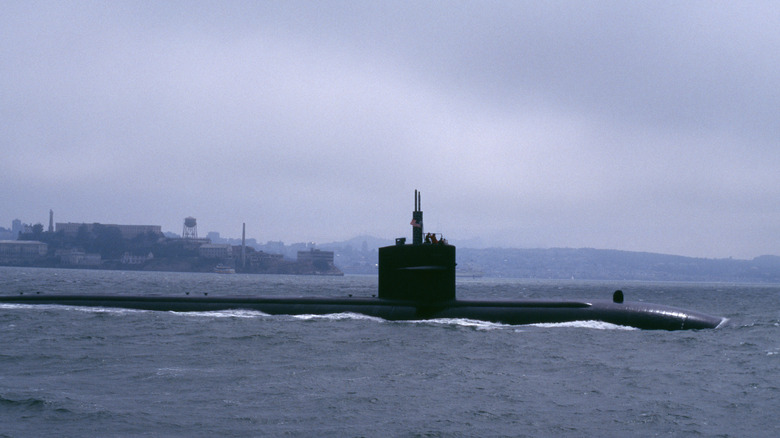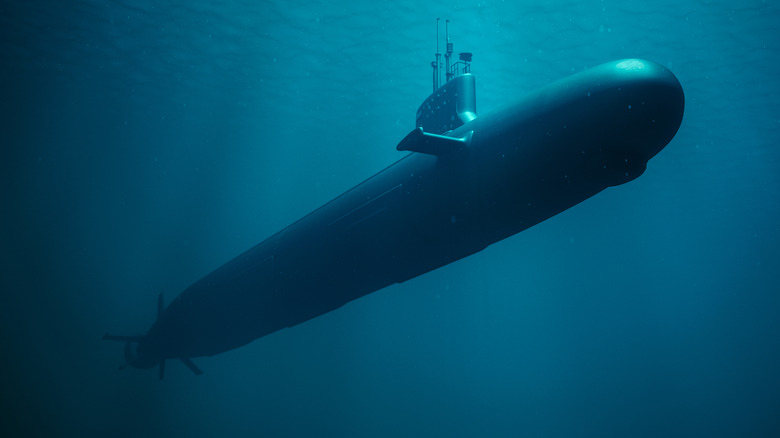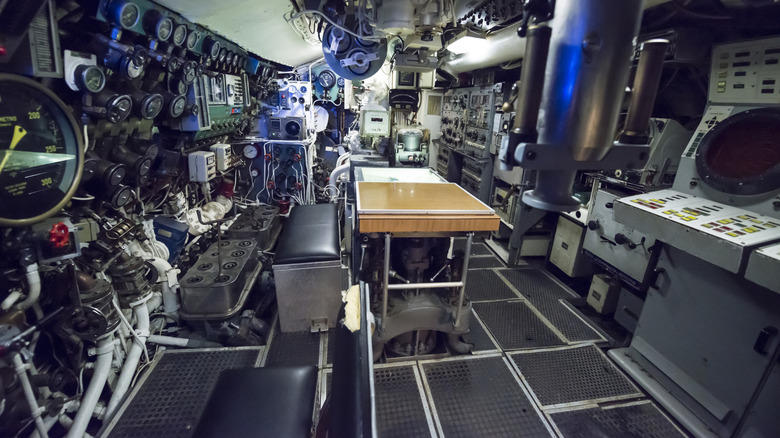How Do Submarines Find Other Ships Underwater?
Because of their stealth, operational adaptability, and capacity to project power in a way that surface ships cannot, submarines are considered one of the most important naval assets a country may have in its arsenal, making them a vital component for both offensive and defensive operations. Most modern submarines are nuclear-powered, allowing them to remain submerged and running for a long period of time, with some able to be fully functional for 20 years without the need to refuel. Despite being underwater and cruising in nearly pitch-black darkness, submarines can accurately find targets through its onboard navigation equipment and instruments.
Submarines navigate underwater through a combination of sophisticated navigational systems that monitor the speed, characteristics, and location of its targets. To determine the submarine's current position, its inertial navigation systems, including ring laser gyroscopes, are used together with various data from electronic speed logs, bottom topography from a fathometer, and GPS position updates. In order to find targets, either hostile or friendly, a submarine uses both active and passive SONAR, or Sound Navigation and Ranging.
Active sonar works by sending out an energy pulse that passes through water. When this pulse hits a ship or another object, it bounces off that object and then returns to a receiver, where computers analyze the time it took to return to determine its size and distance. Passive sonar on the other hand listens for sounds in the water using specialized transducers under water microphones called hydrophones. These hydrophones translate noises into electrical signals, which are transmitted and interpreted as information by a computer.
Seeing in the dark
Designed to be a mobile, independent, and stealthy weapons platform, a submarine's capability to stay underwater and go unnoticed is its greatest advantage compared to other naval ships. Depending on its type, the average operating and maximum depth for submarines vary, as seen with the U.S. Navy Ohio Class, which has an operating depth of 300 meters and a maximum depth of 500 meters, while some Russian submarines, like the K-278 Komsomolets, can go even deeper, with 800 meters as its operating depth and 1,000 meters as its maximum. This ability to go underwater, however, brings its own set of disadvantages, the most important being that submarines are essentially blind while in the depths.
To counter this, its sonar systems act as both the eyes and ears of a submarine. By emitting powerful sound waves, measured up to 235 decibels, these pulses are capable of traveling hundreds of miles when searching for a target. The echo from these sound waves is then processed by onboard computers capable of isolating the noise its target makes apart from the ambient ocean sounds.
Moreover, because military submarines have no windows or portholes to see the outside, they rely on periscopes to observe and track other ships when on the surface. Periscopes are a series of mirrors and lenses that reflect and bend images down a long tube to the eyepiece down the cabin. But, on some submarines, technology has replaced the periscope, one of which can be found in the new Virginia-class submarines, wherein instead of mirrors, the sub is equipped with high-resolution cameras that relay images to the ship's control center.
Undersea cat and mouse
Submarine warfare is an ongoing race between those who work to keep submarines hidden and those who search for ways to find them. Developments in submarine detection technologies including magnetic anomaly detectors, superconducting quantum interference devices, and synthetic aperture radar, have significantly improved the ability to detect and identify submarines at longer ranges and in greater detail.
As a response, submarines have also upgraded their stealth capabilities by adapting new designs and materials used in its construction. Today, modern submarines have vastly improved sound suppression capability, some of which is a result of using rubberized tiles that cover the hull, vibration-damping materials to reduce engine and turbine sounds, and advances in cooling systems and heat emissions that all contribute to minimizing sonar detection.
Given the importance of submarines to the national security and military capability of a country, its evolution to become an ever stealthier and more efficient hunter will continue. Technologies that now include artificial intelligence, autonomous underwater vehicles, and even automation on its weapon systems are some of the new features being explored for the next generation of submarines. Regardless of what new abilities submarines may have in the future, it is likely that they will continue to be among the most powerful vessels on the planet that can find a target wherever it may be lurking underwater.


